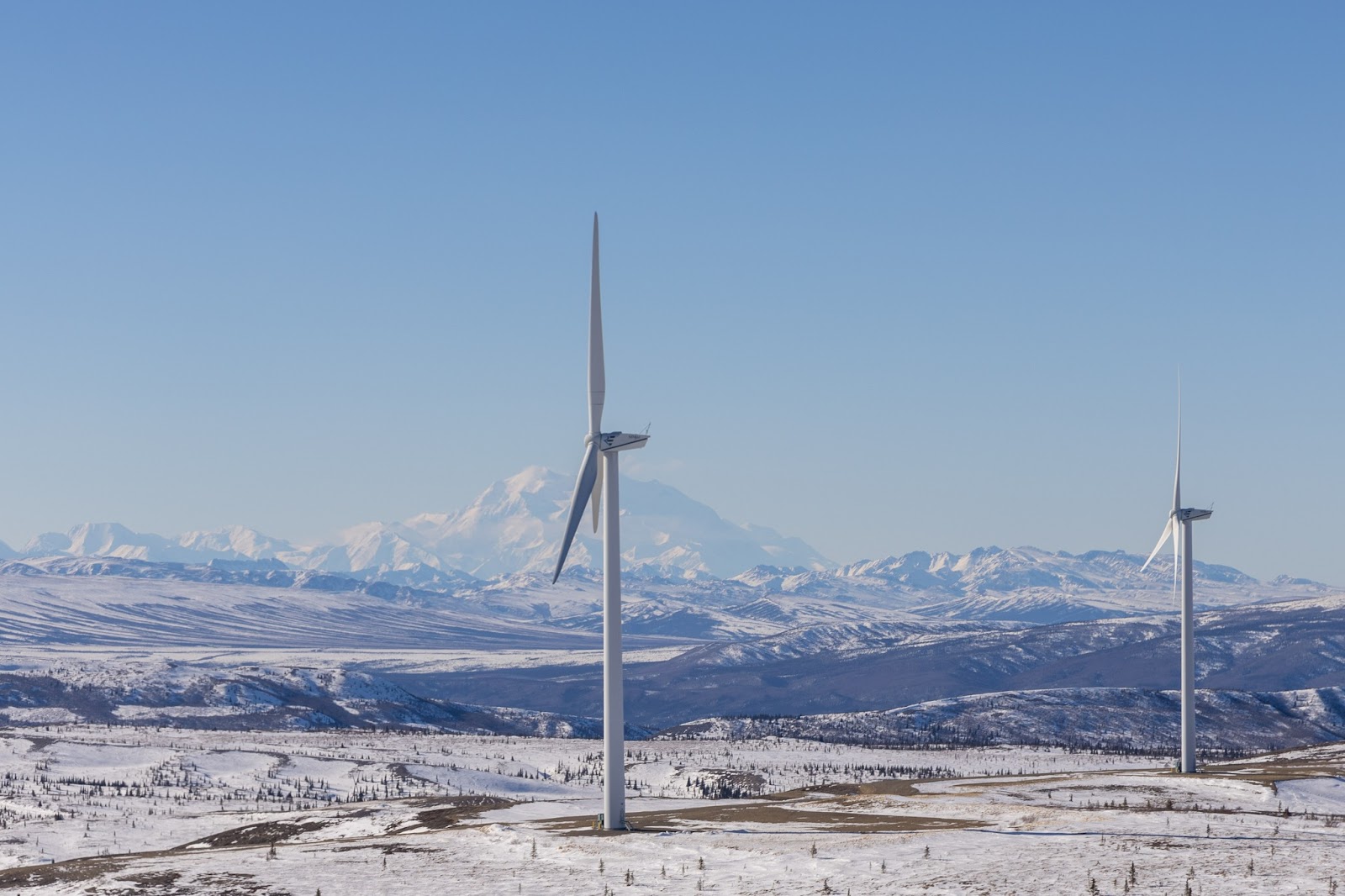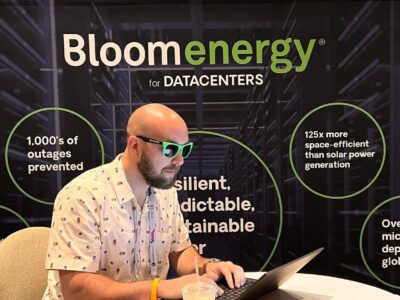Utilities are turning to clean energy to address the rising cost of fossil fuels across Alaska, particularly in the Railbelt, where the majority of the state’s population resides. A 2024 report by the University of Alaska Fairbanks’ Alaska Center for Energy and Power (ACEP) found that the Railbelt could transition to renewables through various pathways, but each would require substantial capital investment. For example, achieving 70% clean energy by adding solar, tidal, and wind power would require $7.7 billion, and achieving 88% clean energy by adding those resources would require $11.8 billion. Meanwhile, achieving 96% zero-carbon generation using solar, wind, and small modular nuclear reactors would require $10.1 billion.
However, as ACEP research professor Steve Colt explained to Alaska’s Senate Resources Committee, “If we were able to make that kind of investment, we would have to pay a lot of money for capital, but we would potentially save three-quarters of a billion dollars of fuel costs every year. So to me, that helps put in perspective the daunting challenge of investing maybe $10 billion, that you could save something approaching $1 billion every year for as long as the equipment operates.”
A 2024 report by the National Renewable Energy Laboratory (NREL) found that the least-cost pathway for the Railbelt to achieve an 80% Renewable Portfolio Standard (RPS) by 2040 would result in net savings of over $100 million per year by the beginning of the next decade. While the lab attributed part of these savings to investment tax credits for solar and wind that were recently repealed, a significant portion stems from the cost advantages of renewables over importing liquefied natural gas. In a scenario where the cost of renewables drops by 10%, savings could increase further by approximately $20 million per year, totalling $220 million cumulatively from 2024 through 2040, according to NREL.
Utilities serving Alaska’s Railbelt region, including the Chugach Electric Association, the Golden Valley Electric Association, and the Matanuska Electric Association, have taken action to join the clean energy transition.
This summer, the Chugach Electric Association (CEA) launched the state’s first community solar project, spanning four acres and featuring 1,560 bifacial solar panels. Any residential, retail, or general service member could subscribe to have the energy produced from between one to twenty panels credited to their electric bill, and the program is currently fully subscribed. “Members have been asking for years for the opportunity to use solar, [but] they don’t want to put panels on their home or their business. This gives you an opportunity to experiment with solar,” CEA senior corporate communications manager Julie Hasquet told Alaska’s KTUU.
It is not the CEA’s first foray into clean energy. The utility has also installed small solar projects on its natural gas power plants. Last year, the CEA and the Matanuska Electric Association jointly invested $65 million in a battery energy storage system, which has a 40-megawatt (MW) capacity, sufficient to charge 1,000 electric vehicles. Andrew Laughlin, CEA chief operating officer, added that the project will help stabilize the grid during power outages: “And what this does is, if there is a trip to a generator, the battery takes over instead of traditional turbine generators. So it responds faster, and it can also not just deliver power, but absorb power.” Also last year, the utility’s board passed a resolution in support of establishing an RPS, making it the first Railblet utility to do so. Sam Cason, chair of the board, explained, “It’s a matter of it being time for the transition. And that’s what we’re looking at, is a transition here.”

Photo Courtesy Chugach Electric Association
Over the years, the Golden Valley Electric Association (GVEA) has also expanded its focus to include clean energy. Its initiatives include a battery energy storage system installed in 2003, the 25 MW Eva Creek Wind Farm, which went online in 2013; the utility took over operations and maintenance in 2020. Additionally, there is a 563-kilowatt (kW) solar photovoltaic system, whose 12 turbines were fully operational in 2018. The utility also purchases wind power from Alaska Environmental Power. In 2019, the GVEA adopted a carbon reduction goal, aiming for a 26% reduction compared to 2012 levels.
Last June, the U.S. Department of Agriculture (USDA) awarded a $100 million loan to the GVEA through its Powering Affordable Clean Energy (PACE) program, with $60 million in loan forgiveness. The GVEA aimed to use the funding to install a 46 MW battery energy storage system in Fairbanks, to upgrade the Nenana Substation, and to install a distribution circuit connecting the Nenana Solar Farm to that substation. In September, the USDA also awarded the utility $206 million in zero-interest loans through its Empowering Rural America (New ERA) program. The GVEA intended to use the funding for the construction of another 46 MW battery energy storage system in Fairbanks, with the remainder earmarked for building 64 miles of transmission lines, adding two new substations, upgrading the North Pole Industrial Substation, and retiring the coal-powered Healy Unit 2. The additions would enable it to enter a 150 MW wind power purchase agreement.
To avoid losing the awards, GVEA scrapped plans for upgrades to the Nenana solar farm earlier this year, due to the company behind it dissolving, as well as the retirement of the coal-fired power plant in Healy. “Unfortunately, if those were kept in, the funding would very likely be in jeopardy,” GVEA director of external affairs and public relations Ashley Bradish told KUAC.

Photo Courtesy Golden Valley Electric Assn.
In 2023, Renewable IPP’s 8.5 MW Houston Solar Farm became the state’s biggest solar site, from which the Matanuska Electric Association (MEA) contracted to purchase the generated power, enough for 1,400 residences. “MEA’s members have been clear – in significant numbers they have told us they are ready for innovation and a path to clean energy as long as it doesn’t impact cost or reliability,” MEA CEO Tony Izzo noted in a press release. “It’s time to chart a new path towards energy diversification and energy security for the future.” Projects like this have contributed to MEA’s 28% reduction in carbon emissions since 2012, enabling it to meet its 2030 goal ahead of schedule. In 2023, MEA’s Board of Directors also adopted a resolution aiming for 50% clean energy by 2050.
The utility has also experimented with a variety of other technologies. Through its Level 2 Charger Pilot Program, MEA customers received a free electric vehicle charger in exchange for providing related data, including the time of day they charged, the duration of their charge, their energy consumption, and their load profile. MEA is currently working on an RF (Radio Frequency) Meter Pilot Program. By installing meters equipped with radio transmitters and antennas that transmit data on power consumption and voltage health back to the utility, MEA will be able to optimize grid operations more efficiently and resolve outages more effectively.

Photo Courtesy Matanuska Electric Association
Notably, the CEA, the GVEA, the MEA, and the Homer Electric Association have all also contracted for a portion of the power generated by the 120 MW Bradley Lake Hydroelectric Plant, the biggest of Alaska’s seven hydroelectric projects.
Some utilities have also sourced hydroelectric power from smaller projects. The MEA, for example, purchases power from the Juniper Creek project, which is co-owned by spouses David Brailey and Melanie Janigo. Between June and October, it generates one-third of a megawatt of power. As Brailey told the Anchorage Daily News, “It’s predictable, and that’s perfect. That’s what you need. I can guarantee it.”





